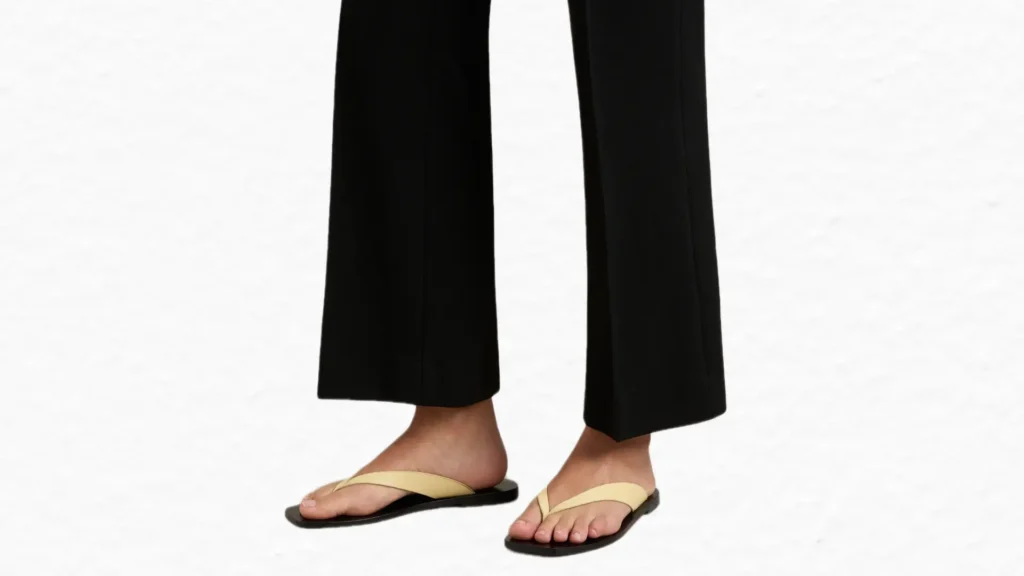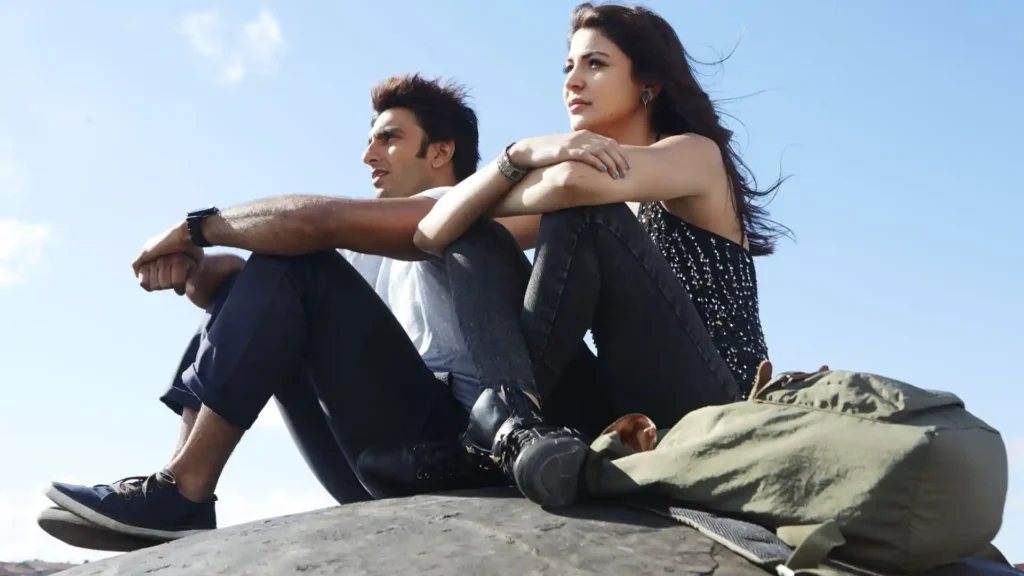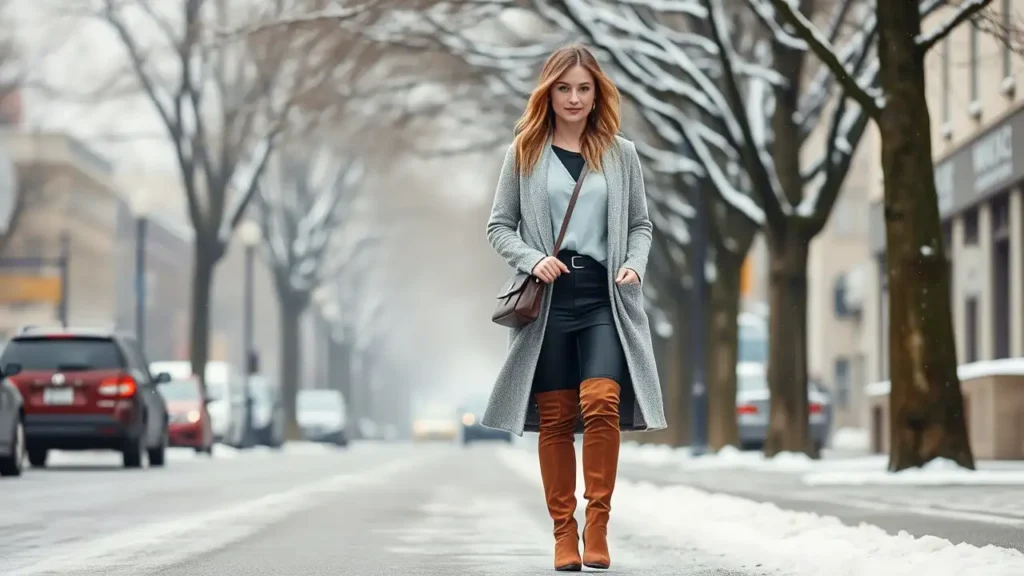Shoes have always played a pivotal role in shaping the cultural identity of each era. From the roaring 1920s to the eclectic 2020s, footwear has been functional and symbolic. These essentials reflect societal shifts, technological advancements, and individual attitudes.
Each decade has its signature styles.Shoes have consistently served as a defining marker of the times. Let’s take a deeper dive into how footwear has evolved over the decades, influencing—and being influenced by—the broader cultural landscape.
1920s: Flappers and T-Straps
The 1920s were a time of liberation, jazz music, and the rise of the flapper culture. Women began embracing shorter hemlines. Their choice of footwear mirrored this newfound freedom. T-strap heels became iconic during this period.
These shoes featured delicate straps that crisscrossed over the foot. They often adorned with embellishments like beads and embroidery. They were designed to complement the Charleston dance moves that defined the era.
Men’s fashion leaned toward oxfords and brogues. They were characterized by their sleek leather designs and intricate perforations. The polished look of men’s formal shoes reflected the economic boom of the post-World War I era.
1930s: Depression-Era Pragmatism
The Great Depression cast a shadow over the 1930s, yet fashion sought solace in glamour and escapism. Shoes became streamlined and understated compared to the ornate styles of the previous decade.
For women, peep-toe pumps gained popularity. They offered a subtle hint of allure while maintaining modesty. Platforms started making an appearance—a nod to Hollywood starlets who used fashion as a means of uplifting spirits during tough times.
Meanwhile, men favored two-tone spectator shoes. They were paired perfectly with tailored suits and fedoras. These shoes exuded confidence even amidst economic hardship. The contrast between light and dark colors in these shoes added visual interest.
1940s: Wartime Utility Meets Feminine Flair
World War II brought about significant changes in fashion, including footwear. In the UK, the Utility Clothing Scheme, introduced in 1941, standardized clothing and footwear production to conserve resources. This capped the number of styles and materials available.
In the US, the War Production Board imposed similar restrictions starting in 1942. This restricted heel heights to 1.5 inches and banned excessive embellishments.
For women, designers turned to alternative materials like cork, wood, and fabric. The cork-wedge heel, a standout invention of the decade, offered height without requiring metal. Italian designer Salvatore Ferragamo popularized this style, using cork sourced from local wine bottles. Platforms often paired with fabric uppers in cotton and rayon.
Peep-toe shoes also rose to prominence, partly as a nod to feminine flair. These designs paired beautifully with the era’s A-line skirts and padded-shoulder dresses. Browns, navies, and blacks dominated due to limited dyes. Women often personalized their shoes with small bows, buckles, and hand-painted details, subtle rebellions against the drabness of war.
Men’s shoes in the 1940s were heavily influenced by military necessity. The iconic combat boot—rugged, ankle-high, and made of tough leather—became a symbol of the soldier’s life. They were designed for durability on battlefields from Normandy to the Pacific. Civilians, too, adopted sturdy footwear.
Rubber soles were replaced with wooden alternatives, and styles stayed simple to comply with rationing. In the US, the “Victory Shoe,” a government-approved design, exemplified this austerity: plain, functional, and devoid of excess.
As the war ended in 1945, a shift began. With materials gradually returning to civilian use, men’s footwear saw a revival of pre-war polish. Wingtips and loafers in gleaming leather reentered wardrobes.
1950s: A Return to Opulence
Women’s shoes in the 1950s strutted into an era of unabashed femininity. The stiletto heel, introduced by Italian designers in the late 1940s, became the decade’s defining silhouette. With its slender, towering form, the stiletto was made possible by post-war advancements in steel reinforcement and injection-molded plastics.
Parisian designer Roger Vivier, working with Christian Dior, elevated the style. Audrey Hepburn and Marilyn Monroe cemented the look as a cultural touchstone.
Soft pinks, mint greens, and baby blues dominated the decade’s domestic idealism. Bows, embroidery, and rhinestone embellishments added a playful charm. These aligned with the full skirts and cinched waists of Dior’s New Look.
These shoes weren’t just for show; they signaled a return to traditional gender roles, where women’s elegance was prized as a counterpoint to men’s practicality.
For younger women, the rise of teenage culture introduced casual options. Saddle shoes, with their black-and-white or brown-and-tan contrasts, became a high school staple. They were often paired with bobby socks and poodle skirts.
Penny loafers, too, crossed over from men’s wardrobes. These shoes bridged the gap between adult formality and teen exuberance, hinting at a generation eager to rewrite the rules.
Men’s shoes in the 1950s mirrored the era’s clean-cut ethos. Polished wingtips and brogues dominated boardrooms and dinner parties. Suede loafers gained traction among the college set and suburban dads alike. They epitomized the relaxed “Ivy League” style popularized by Bass Weejun. These shoes complemented the era’s tailored suits and casual slacks.
The greaser subculture, born in working-class neighborhoods and fueled by rock ‘n’ roll pioneers Elvis Presley, stomped onto the scene in heavy leather boots. Inspired by military and motorcycle styles, these boots—often black, scuffed, and paired with cuffed jeans—stood in stark contrast to the polished mainstream.
1960s: Swinging into Modernity
The 1960s were all about rebellion and experimentation. No shoe captures the 1960s’ zeitgeist quite like the go-go boot. Emerging mid-decade, these low-heeled, mid-calf boots were designed to complement the era’s defining garment: the miniskirt.
Pioneered by designers Mary Quant in London and André Courrèges in Paris, the miniskirt bared legs like never before. Go-go boots provided a sleek, futuristic finish. Made from vinyl and patent leather, they were affordable and eye-catching.
Nancy Sinatra’s 1966 hit “These Boots Are Made for Walkin’” cemented their status. The mod aesthetic—short for “modernist”—dominated the early-to-mid 1960s. The mod culture favored geometric patterns, bold hues, and a streamlined silhouette.
Go-go boots fit this mold. Courrèges envisioned a space age look by experimenting with metallic finishes and flat soles. Beyond boots, women’s footwear ventured into psychedelic territory with platform heels in swirling patterns.
Meanwhile, men embraced Chelsea boots, which complemented slim-fit trousers and psychedelic prints. Beatniks and hippies opted for moccasins and sandals. This era rejected mainstream ideals in favor of bohemian lifestyles. This was a decade where individuality reigned supreme, and shoes reflected the era’s progressive spirit.
The Groovy 1970s: Platform Mania
If the 1970s had a footwear mascot, it was the platform shoe. These towering creations, with soles ranging from one to six inches, ruled the decade. Women strutted in platform heels adorned with glitter, metallics, or bold patterns.
Designer Terry de Havilland, known as the “Rock ‘n’ Roll Cobbler,” pushed boundaries with sky-high stacks. Mainstream brand Candie’s made platforms accessible to mall-goers. The style wasn’t just for women; men rocked platforms too. They were paired with flared trousers and open shirts, epitomized by John Travolta’s white-suited swagger in Saturday Night Fever (1977).
Platforms weren’t new—cork wedges had debuted in the 1940s—but the 1970s took them to extremes. Heights soared combining thick soles with chunky heels.
Clogs, with their wooden soles and leather uppers, became a staple. Originating in Scandinavia and popularized by the counterculture, they appealed to the back-to-nature crowd. Swedish Hasbeens elevated clogs with higher platforms, merging hippie roots with 1970s boldness.
The 1970s planted the seeds for the sneaker obsession that would define later decades. The jogging boom, sparked by Frank Shorter’s 1972 Olympic marathon win, turned running into a cultural phenomenon, and brands raced to meet demand. Adidas and Puma rolled out innovative designs—lightweight uppers, cushioned soles, and bold colorways.
1980s: The Power-Dressing
The 1980s were marked by excess, ambition, and larger-than-life aesthetics. Shoulder pads weren’t the only thing reaching new heights—so were shoes.
Pointed-toe pumps with sky-high stilettos became essential for power dressing. Neon-colored sneakers catered to the fitness craze sweeping the nation. Doc Martens and combat boots made waves among punk rock enthusiasts.
This was also the decade when Nike and Reebok rose to prominence. They introduced high-performance sneakers that blurred the line between sports and streetwear. Shoes communicated status, personality, and attitude louder than ever before.
1990s: Grunge and Comfort
In stark contrast to the glitz of the ’80s, the 1990s embraced minimalism and grunge. Flannel shirts and ripped jeans were paired with scuffed-up Converse Chuck Taylors and Dr. Martens. On the flip side, sleek slip-on loafers and square-toed mules catered to those leaning toward polished simplicity.
Sneakers exploded in popularity. Nike and Adidas became household names. The introduction of Air Jordans revolutionized sneaker culture. The ’90s proved that comfort could coexist with style, paving the way for athleisure trends in the years to come.
2000s: The Noughties
The early 2000s were a melting pot of influences. It blended retro nostalgia with futuristic aspirations. Ugg boots soared in popularity. Heels took on unconventional shapes, such as the now-infamous “heel-less” designs by avant-garde labels like Alexander McQueen.
Flip-flops and jelly sandals dominated casual wear, while athletic sneakers continued evolving into high-performance gear.
This decade celebrated eclecticism. This allowed individuals to mix and match styles freely. The 2000s encouraged experimentation and personal expression.
2010s–To Present: Statement Pieces
No trend defines the 2010s and 2020s more than the sneaker’s ascent. Streetwear’s rise elevated athletic shoes from gym wear to cultural icons. Nike’s Air Jordan retros, Adidas’ Yeezy line, and Balenciaga’s Triple S fueled a resale market worth billions.
The chunky dad sneaker, with its exaggerated soles and retro vibes, emerged as a standout. Balenciaga debuted the Triple S in 2017, and soon FILA and New Balance leaned into the bulky aesthetic.
Countering sneaker mania, minimalist sandals and sleek ankle boots carved out their own space. The 2010s saw a resurgence of strappy sandals echoing 1990s chic. Birkenstock turned the ugly sandal into a fashion must-have. Teva’s sporty sandals, too, rode the athleisure wave.
Ankle boots, meanwhile, became the decade’s workhorse. With pointed toes and block heels, they transitioned seamlessly from office to evening. Stuart Weitzman and Everlane perfected the style.
Shoes are far more than mere accessories. They are artifacts of history. As we step into the future, one thing is certain: shoes will remain at the forefront of fashion, telling stories of who we are and where we’ve been.




